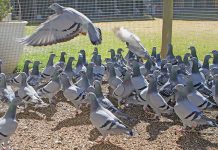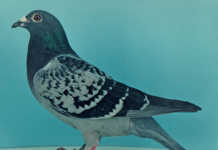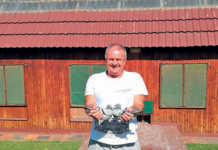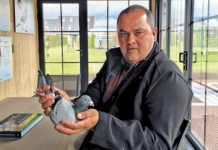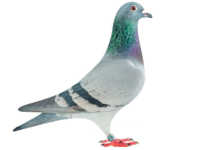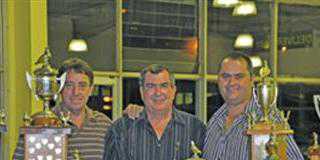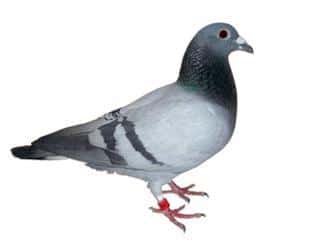
Despite all I’ve written on the subject of breeding and selecting quality racing pigeons, I’m often asked to reveal the ‘secret formula’. But there are few secrets in this game – only truths uncovered by patient research and experimentation. And shallow assumptions masquerading as ‘facts’.
Still, let’s provide a brief overview of some breeding ‘tips’:
Be tough (but not cruel).
Pigeons that fail to respond well to a standard racing training programme aren’t desirable. The old homing type that plods along at its own speed is out-flown by the new generation of early maturing pigeons that are winning races from the age of six months. Our ‘golden oldies’ need to be cross-bred with pigeons from an early-maturing gene pool. If you don’t want to go this route, select those that show signs of early maturity.
A further disadvantage of the old homing type is that they get ‘clever’ as they mature and don’t hurry home. So we also need to look for competitive birds, where the will to win is a natural trait. Enter your birds into races at the age of six or seven months and identify the early maturing birds for future use.
Select for advanced immunity.
Don’t open the medicine cupboard every time a pigeon sneezes. And if it gets desperately ill after minimal exposure and doesn’t respond positively to pick-me-up treatments, cull it. The fact that, in SA, most pigeon medication can be bought ‘over the counter’ (as opposed to requiring a vet’s prescription) has promoted the breakdown of our pigeons’ natural immunity.
The results can be seen in the fact that most SA pigeons get beaten in One-Day Lofts. This is because they’re not trained by owners forever ‘assisting’ their birds with pills and potions, and so are ‘inferior’. Pigeon health should not be maintained artificially.
Select for advanced orientation.
While sprint champions have well-honed direction-finding faculties, many of them stray in races longer than 600km. From this we might conclude they can’t handle the extra hours on the wing, which is true in some cases. But many also stray over short distances when race conditions turn unfavourable.
If your pigeons don’t return in good time in overcast conditions, get lost in mountainous terrain, or, when overtaken by nightfall, fail to get back on track in the morning – you can assume their direction-finding ability is poor. They’re followers, not leaders. To upgrade your flock’s orientation ability, use more multiple performers in your breeding programme – that is, birds that can achieve top scores against strong competition in races longer than 600km.
Strength of competition.
You’re only as good as your competition. Imagine owning pigeons such as those of Kees Bosau from the Netherlands that came in first and second in a race against 99 000 birds! One of his birds also came first in a race against 102 000. As these traits are passed on, look for birds with a good pedigree.
If most of these common breeding requirements aren’t present within the gene pool of your pigeons, you’ve got off to a false start in pigeon racing – and will be a follower and not a leader.
Contact Thomas Smit on 011 680 4778 or at [email protected]. Please state ‘Pigeons’ in the subject line of your email.


